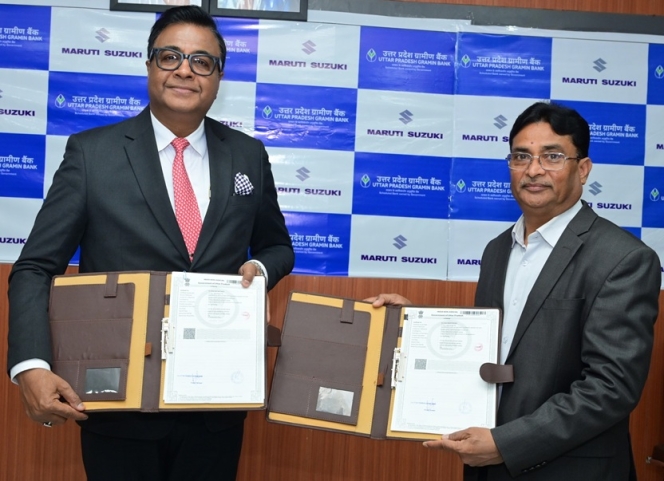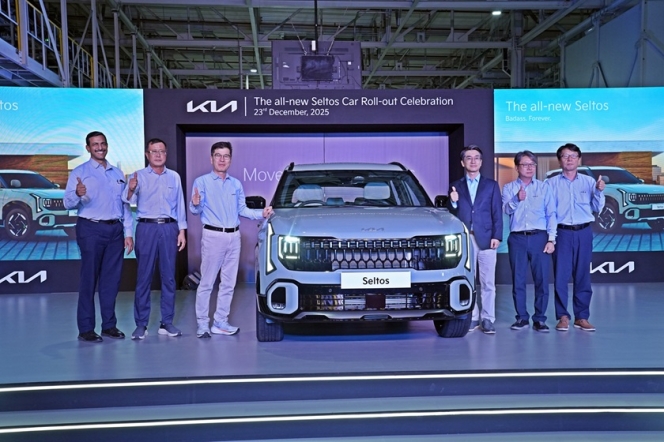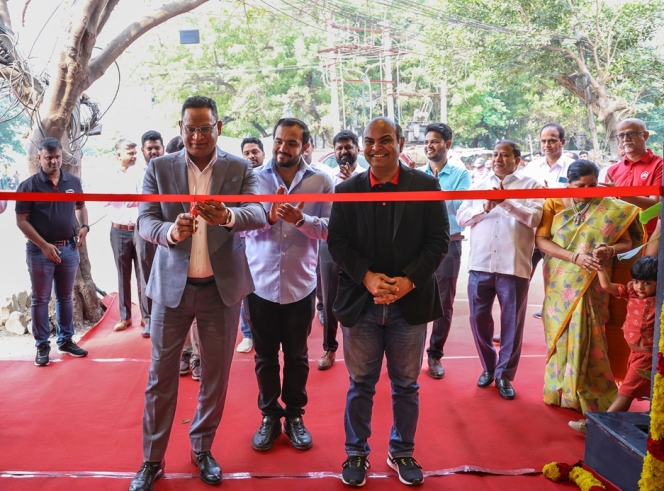
 A few weeks ago, when I heard the name Stellantis, I thought it was some new medical drug for the treatment of acidity or constipation. In my mind, the name also rhymed with Atlantis, a fabled island in the Atlantic Ocean that, according to legend, sank beneath the sea! Anyway, now the world knows that Stellantis is the new auto company formed by the merger of Fiat Chrysler Automobiles and Groupe PSA, completing a more than two-year effort to form one of the world’s largest vehicle manufacturers. According to reports, the merger of FCA and Peugeot creates the world’s fourth-largest automaker with 400,000 employees in 130 countries and 30 manufacturing plants with 14 brands.
A few weeks ago, when I heard the name Stellantis, I thought it was some new medical drug for the treatment of acidity or constipation. In my mind, the name also rhymed with Atlantis, a fabled island in the Atlantic Ocean that, according to legend, sank beneath the sea! Anyway, now the world knows that Stellantis is the new auto company formed by the merger of Fiat Chrysler Automobiles and Groupe PSA, completing a more than two-year effort to form one of the world’s largest vehicle manufacturers. According to reports, the merger of FCA and Peugeot creates the world’s fourth-largest automaker with 400,000 employees in 130 countries and 30 manufacturing plants with 14 brands.
 According to the company, Stellantis draws on the Latin “stello,” meaning “to brighten with stars”, and surely hopes to be a stellar performer. “We believe that Stellantis needs to be great rather than big,” said Carlos Tavares, CEO of Stellantis. The merger is estimated to save about Euro five billion a year by converging vehicles and powertrains, jointly procuring parts and integrating sales and marketing functions. “You can trust our management in our execution capability,” Tavares said while launching its stock on the New York stock exchange. “We are here to get the job done,” he said.
According to the company, Stellantis draws on the Latin “stello,” meaning “to brighten with stars”, and surely hopes to be a stellar performer. “We believe that Stellantis needs to be great rather than big,” said Carlos Tavares, CEO of Stellantis. The merger is estimated to save about Euro five billion a year by converging vehicles and powertrains, jointly procuring parts and integrating sales and marketing functions. “You can trust our management in our execution capability,” Tavares said while launching its stock on the New York stock exchange. “We are here to get the job done,” he said.
He also assured the FCA employees that he doesn’t expect any layoffs due to company’s new global scale. But history tells a different story. One auto analyst, Sam Abuelsamid, says mergers end up with fewer jobs somewhere down the line, if not right away. “American jobs are probably less at risk, but I do expect that we will see some job losses in Europe than North America,” said Abuelsamid. To be sure, the auto industry is driving toward an uncertain future, where cars increasingly run off of batteries and software, with the internal combustion engine may be headed for demise. Bloomberg Intelligence service said, “Stellantis faces a mixed outlook as US stimulus plans may buoy Chrysler versus a more uncertain outlook for Peugeot in Europe.

Chrysler’s History
The American Big Three OEMs – GM, Ford, and Chrysler – all have a checkered history, but none as varied as that of Chrysler! GM, due to its dominant size and anti-trust regulations, is not a candidate for merger and acquisition (M&A). Ford, due to its family ownership, is not an easy candidate for M&A also. That leaves Chrysler, the smallest of the three, as a feasible M&A candidate for foreign OEMs, seeking to gain US entry.
Chrysler was founded by Walter Chrysler in 1925, when the Maxwell Motor Company (est. 1904) was re-organised into the Chrysler Corporation. In the 1930s, the company created a formal vehicle parts division under the MoPar brand.
In 1978, under the leadership of Lee Iacocca, Chrysler sold its loss-making European division to Peugeot!
In 1979, the company was on the brink of going out-of-business and was rescued by the US government through $1.5 billion in loan guarantees.
In 1987, it acquired American Motors Corporation (AMC), for much-needed production capacity and the Jeep brand, which has helped Chrysler tremendously.
 In 1998 Daimler-Benz and Chrysler formed a 50–50 partnership. Chrysler Corporation then was legally renamed DaimlerChrysler Motors Company LLC. On May 14, 2007, DaimlerChrysler AG sold 80.1 percent of its stake in the Chrysler Group to Cerberus Capital Management, and DaimlerChrysler Corporation became Chrysler Holding LLC.
In 1998 Daimler-Benz and Chrysler formed a 50–50 partnership. Chrysler Corporation then was legally renamed DaimlerChrysler Motors Company LLC. On May 14, 2007, DaimlerChrysler AG sold 80.1 percent of its stake in the Chrysler Group to Cerberus Capital Management, and DaimlerChrysler Corporation became Chrysler Holding LLC.
Towards the end of 2008, amid the great depression, Chrysler announced that they were dangerously low on cash and may not survive past 2009, and announced a plan to file for bankruptcy and permanently shut down all operations. On March 30, 2009, American Government provided an additional USD six billion to support Chrysler, contingent on the company finalising an alliance with Fiat. While the merger negotiations were still going on, Chrysler did file for Chapter 11 bankruptcy protection at the Federal Bankruptcy Court in New York in April 2009.
On May 24, 2011, Fiat paid back USD 7.6 billion in the US and Canadian Government loans. In July, Fiat bought the Chrysler shares held by the United States Treasury. With the purchase, Chrysler once again became foreign-owned, this time an Italian company, to be known as FCA US LLC. And now, Chrysler again has a new name! How long will it last? (MT)
Citroen India Delivers 51 C3 CNG Vehicles To Luthra Group
- By MT Bureau
- December 24, 2025
Citroen India, in partnership with its dealership La Maison Nanavati, has completed the handover of 51 Citroen C3 CNG vehicles to the Luthra Group. The ceremony took place at the Luthra Group’s headquarters in Surat.
The delivery is part of Citroen's strategy to expand its presence in tier-II and tier-III markets by providing mobility solutions to businesses and individuals.
The Citroen C3 CNG is designed for high-usage environments and daily commutes. The model includes several features tailored for the Indian market, integration of a factory-fitted CNG kit to manage running costs. A suspension system tuned specifically for local road conditions. Provisions for cabin space and air-conditioning systems designed for high-ambient temperatures.
The handover to Luthra Group represents the brand's focus on cost-efficient transportation. By targeting the regional business sector, Citroen India aims to strengthen its footprint in Gujarat and the broader Indian mobility market.
The C3 CNG is positioned as a solution for users requiring reliability and low operating expenses without compromising on ride comfort.
Maruti Suzuki India Partners Uttar Pradesh Gramin Bank For Retail Financing
- By MT Bureau
- December 24, 2025

Maruti Suzuki India has signed a Memorandum of Understanding (MoU) with Uttar Pradesh Gramin Bank, a regional rural bank, for vehicle retail financing partnership on new cars, pre-owned vehicles and commercial vehicles.
This collaboration marks the 50th retail finance partner for Maruti Suzuki India. The partnership is intended to use the bank’s network to provide credit options to a range of customer profiles, particularly in rural and semi-urban regions.
The partnership aims to increase the accessibility of Maruti Suzuki products through, tailored finance schemes designed for rural and regional customers.
Partho Banerjee, Senior Executive Officer, Marketing & Sales, Maruti Suzuki India, said, “Our partnership with Uttar Pradesh Gramin Bank marks a significant milestone as we onboard our 50th retail finance partner. This reinforces our commitment to making car ownership simpler and more affordable for customers across India. By expanding our reach through this strategic alliance, we aim to empower buyers with competitive, customer-friendly financing solutions that enhance the overall purchase experience. We remain focused on delivering seamless, tailored finance options, and this collaboration strengthens our vision of providing the Joy of Mobility to aspiring Indian consumers.”
Yadav S. Thakur, Chairman, Uttar Pradesh Gramin Bank, said, “At Uttar Pradesh Gramin Bank, empowering customer aspirations is at the heart of everything we do. Our partnership with Maruti Suzuki, a leader in the automotive industry, is a strategic step towards enhancing our service offerings and delivering greater value to our customers. This collaboration aligns with our 'Customer-First' mission, enabling us to provide accessible and affordable vehicle financing solutions. We look forward to helping more individuals and families across the country realise their dream of owning a Maruti Suzuki vehicle.”
Kia India Commences Production Of New Seltos In Anantapur
- By MT Bureau
- December 23, 2025

Kia India has started production of the latest generation Seltos at its manufacturing facility in Anantapur. The company has confirmed that prices for the mid-SUV will be announced on 2 January 2026.
The Anantapur plant, established in 2019, serves as a hub for both the Indian domestic market and international exports. The facility uses automation and a local workforce to manufacture the Seltos, which was the first model produced by the company in India.
The new model is built on Kia’s K3 platform, which has been engineered to increase structural rigidity and improve suspension damping. The vehicle has grown in size compared to its predecessor to increase cabin space and stability. It has 4,460 mm of length, 1,830 mm of width and a wheelbase of 2,690 mm.
The exterior design follows the ‘Opposites United’ philosophy, featuring a ‘Digital Tiger Face,’ LED projection headlamps, and alloy wheels with neon brake callipers.
The vehicle integrates several digital interfaces and driver assistance systems. It features an upgraded Kia Connect 2.0 suite with over-the-air (OTA) software updates and a proximity unlock function.
In terms of safety, it gets 24 features as standard, while ADAS Level 2 offers 21 autonomous features to assist the driver. The Kia Seltos SUV comes with three engine options – 1.5-litre Petrol producing 115 PS of power and 144 Nm of torque, 1.5 T-GDI Petrol producing 160 PS of power and 253 Nm of torque and a 1.5-litre diesel engine producing 116 PS of power and 250 Nm of torque.
Transmission choices include a 6-speed manual (6MT), intelligent manual (6iMT), IVT, 7-speed dual-clutch (7DCT) and a 6-speed automatic (6AT). The model will be sold in four trims – HTE, HTK, HTX and GTX – with additional option variants and an X-Line styling pack.
Gwanggu Lee, Managing Director & CEO, Kia India, said, “The roll-out of the All-New Kia Seltos marks a proud milestone for Kia India. Seltos has long set benchmarks in the mid-SUV segment, and this new generation represents a bigger, bolder, and more progressive evolution shaped by insights from Indian customers. With production now underway at our Anantapur facility, our teams are fully geared to ensure customers can take delivery of their all-new Seltos without long waiting periods. We are confident the all-new Seltos will once again redefine expectations in the segment and strengthen Kia’s leadership in India."
“The new Seltos looks fantastic. The Anantapur team, together with our supplier partners, have done an outstanding job in delivering our customers a great looking, significantly bigger, technologically progressive and safe vehicle with impressive functionality and connectivity,” he said.
- Citroen India
- Jeep
- Stellantis
- Citroen 2.0
- Shailesh Hazela
- Kumar Priyesh
- Sree Venkata Teja Kethineni
- VTK Automobiles
Citroen India Opens 126th Outlet In Chennai Under Citroen 2.0 Strategy
- By MT Bureau
- December 23, 2025

Stellantis-owned French automotive brand Citroen India has inaugurated its 126th point of sales and service (POS&S) facility in Chennai, continuing the expansion of its network under the ‘Citroen 2.0 – Shift Into The New’ strategy.
The new 3S (Sales, Service and Spares) facility is located at Chitlapakkam, near Chrompet. It is an extension of the partnership with VTK Automobiles, which now operates five Citroen touchpoints in the city. The outlet functions as a ‘Stellantis Brand House,’ allowing customers to access both Citroen and Jeep brands within a single space.
Since the announcement of the Citroen 2.0 strategy, the brand has increased its network by 48.6 percent. Over the last six months, the company added 43 points of sale through its network expansion programmes. Citroen expects to reach a total of 135 outlets by the end of the year, with further operations planned for the north, west, and east of India.
The strategy focuses on several pillars – deepening the domestic supply chain for India-centric products. Expanding the dealer footprint into Tier 2 and Tier 3 locations. Using digital tools and unified spaces for sales and aftersales services.
Shailesh Hazela, CEO and Managing Director, Stellantis India, said, “The expansion of Stellantis network further with VTK dealership in Chennai marks another important step in Citroen and Jeep India’s network growth strategy. Chennai is a key market for us, and this upgraded facility will enable us to serve our customers better with a seamless sales and ownership experience. Aligned with our Citroen 2.0 strategy, we remain committed to strengthening our dealer partnerships and building a robust, customer-centric network across the country.”
Kumar Priyesh, Director Automotive Brands, Stellantis India, said, “We have grown our network by almost 48.6 percent since we announced the Citroen 2.0 strategy and have been able to expand our operations in different parts of country: adding tier 2/3 locations while further strengthening in Metro/ Tier 1 cities. Through project Visitar, Network Expansion Program and expansion in new geographies we added over 43 POS in the last 6 months and are already in advanced stages to start additional operations in North, West and Eastern parts of the country and expected to close the year with 135 POS for Citroen.”
Sree Venkata Teja Kethineni, Dealer Principal, VTK Automobiles, said, “We’re happy to partner to this pivotal shift in automotive retail, proudly representing Jeep and Citroen. Our dual-brand strategy empowers us to deliver a truly elevated and distinctive experience – whether customers seek rugged performance or refined sophistication. With passion, professionalism and personalised care at the core, our team is committed to exceeding expectations and upholding the global standards these iconic brands represent.”
The facility includes a service centre equipped with diagnostics and digital tools. Staff members are trained across both Jeep and Citroen product lines to provide technical support and product information.






Comments (0)
ADD COMMENT